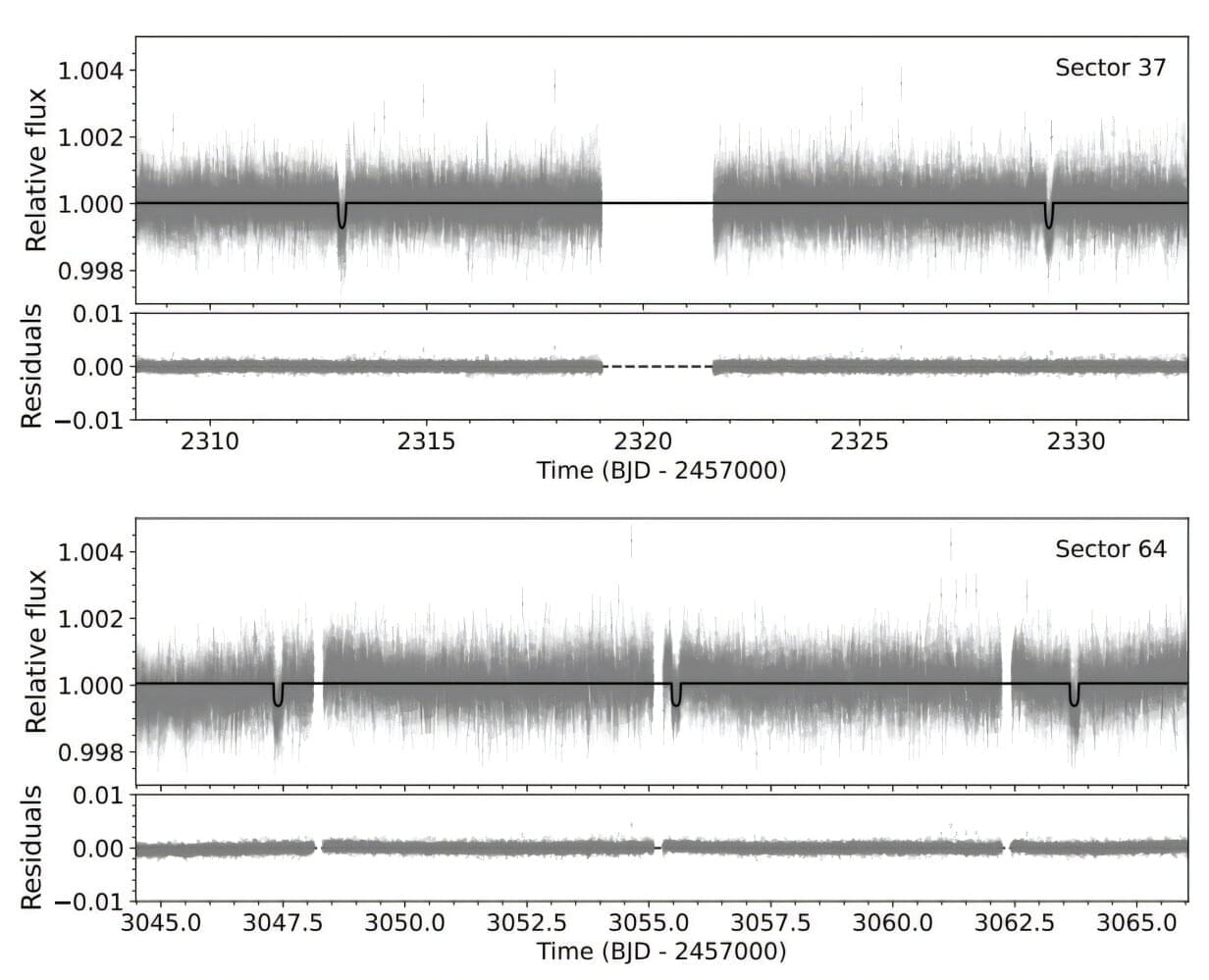Using NASA’s Transiting Exoplanet Survey Satellite (TESS), an international team of astronomers have detected a new sub-Neptune exoplanet orbiting a bright G-type star. The newfound alien world, designated TOI-3493 b is more than three times larger and about nine times more massive than Earth. The finding was reported in a research paper published April 17 on the preprint server arXiv.
To date, TESS has identified more than 7,500 candidate exoplanets (TESS Objects of Interest, or TOI), of which 620 have been confirmed so far. Since its launch in April 2018, the satellite has been conducting a survey of about 200,000 of the brightest stars near the sun with the aim of searching for transiting exoplanets—ranging from small, rocky worlds to gaseous giants.
TOI-3493, also known as HD 119,355, is a star of spectral type G1/2 V at a distance of some 315 light years away. Recently, a group of astronomers led by Priyanka Chaturvedi of the Thuringia State Observatory Tautenburg in Germany, identified a transit signal in the light curve of TOI-3493 with TESS. The planetary nature of this signal was confirmed by follow-up observations using ground-based facilities.
